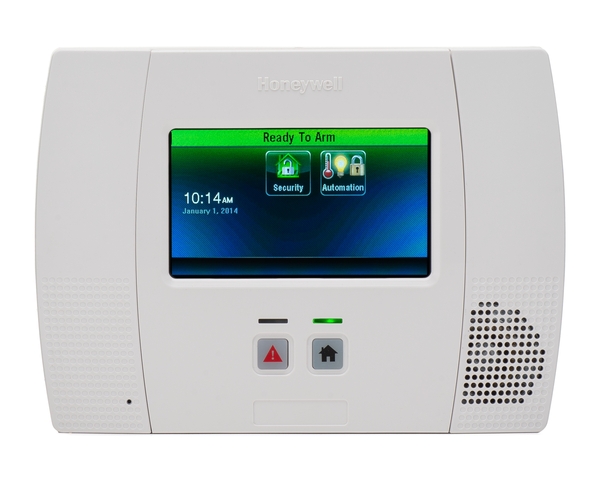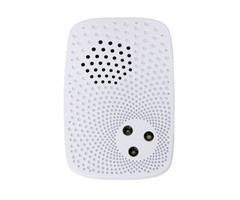Alarm Grid Video Recap: October 21st - 25th
Posted By Michael GorisHi DIYers! We're here with the Alarm Grid video recap covering October 21st thru 25th. We have eight (8) new videos this time. These videos proudly feature the Alarm Grid boys Jarrett, Joe, and Jorge. We hope you're ready to learn more about security systems! Let's check out the videos!
Issues Disabling Auto-Stay Arming for a Vista-128BPT
Joe talks about issues regarding Auto-Stay Arming on a VISTA-128BPT running firmware version 10.0. This firmware version has an error where Auto-Stay Arming is not automatically disabled when arming from Total Connect 2.0. This can cause issues if you Arm Away from Total Connect 2.0 and you aren't around to fault an Entry/Exit Zone during the Exit Delay countdown. When this happens, Auto-Stay Arming will go into effect for any zone where the feature is enabled.
Connecting The Lyric Alarm System to Alexa
Jorge explains how you can connect the Resideo Lyric Security System with Amazon Alexa for spoken voice commands. In order to do this, the Lyric Alarm System must be paired with the Total Connect 2.0 platform. Any voice commands for the Lyric System sent through Alexa will pass through Total Connect 2.0 before being forwarded to the panel. You can use Alexa voice commands through TC2 to arm the system, check current status, and control smart home devices.
Why Your Vista-128BPT is Armed Stay After Choosing Arm Away from TC2
Joe explains why you might find that your VISTA-128BPT Security System has Armed Stay even though you have selected Arm Away on Total Connect 2.0. This is due to the error on Firmware Version 10.0, were the TC2 platform doesn't know to automatically ignore Auto-Stay Arming settings if they are enabled. You can overcome this issue by upgrading to Firmware Version 10.4, or by manually disabling Auto-Stay Arming for every zone on the VISTA-128BPT Alarm System.
The Honeywell Lyric Security System Will Allow for Different User Codes
Jorge explains how you can set up multiple user codes on a Honeywell Lyric Alarm Panel. You need to provide a valid code to perform various system functions such as arming and disarming. Additionally, the Master Code and Installer Code both have special privileges on the system as well. The Installer Code is particularly important, as it is needed for programming the system. However, you can only disarm using the Installer Code if it was the code used to arm originally.
Using More Than One SkyBell With Total Connect 2.0
Jarrett explains how you cannot use more than one (1) SkyBell device with a Total Connect 2.0 account. If you want to use a second SkyBell Video Doorbell, then you will need a second Total Connect 2.0 account. Alarm Grid customers can add one (1) SkyBell to any Total Connect 2.0 account, even if their plan does not technically include video surveillance. We offer a special Video-Only Plan, which is perfect if you already have an alarm monitoring plan, but you are needing a second account to add a second SkyBell device.
Why A Legacy IPCAM Won't Work With Total Connect 2.0
Jarrett explains an issue that you might encounter when trying to use a legacy Total Connect 2.0 IP Camera with the TC2 platform. The older legacy TC2 IP Cameras have default software that is not compatible with the new HTML5 version of TC2. Resideo pushed down an update to these cameras to make them compatible with the new HTML5 platform. But any legacy TC2 IP Cameras that weren't connected at the time were unable to receive the update. Those cameras can no longer be used with TC2.
How a Qolsys IQ Panel 2 Behaves When the Internet Goes Down
Jorge explains what happens when a Qolsys IQ Panel 2 Plus System loses its internet connection. When this happens, the system will remain connected with Alarm.com using its built-in LTE cellular communicator. All versions of the IQ Panel 2 Plus have an integrated cellular communicator for this exact purpose. You can choose from AT&T LTE or Verizon LTE. We recommend going with the service that works best in your area, regardless of which one you use for your personal phone.
Resetting A Qolsys IQ Panel 2 to Factory Defaults
Jorge covers the process for factory resetting a Qolsys IQ Panel 2 Plus System. This is done using the Dealer Code, which is 2222 by default. By performing a factory reset and restoring the system to factory default settings, several things will happen. Any programming settings will be restored to their default. All programmed sensors will be deleted. All Z-Wave devices will be cleared. All user codes will be deleted, with the exception of default codes. If you changed the Master, Installer, or Dealer Codes, they will all be reset to their default.
















